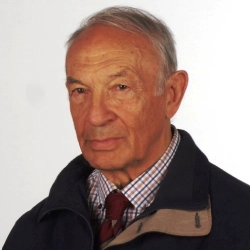
Aleksander Sobieszek
Independent Scientist, Member of the Polish Society of Clinical Neurophysiology, PolandPresentation Title:
Electrical patterns reflecting functional states of the neocortical tissue in response to electrical stimulation: comparison of the effects of the direct cortical stimulation (kindling - in the experimental, animal model of epilepsy), versus response to the transcranial electromagnetic stimulation (TMS) of the human brain
Abstract
Electrical stimulation of the brain tissue has been already accepted as the valuable method of supporting correctness of the activities of the stimulated neuronal networks. However, there are still uncertainties concerning possible consequences of stimulation expressed in early, as well as delayed effects of stimulation, and of course the safety of the brain tissue – depending on the intensity of stimulating currents. Results of the direct electrical stimulation performed in experimental model of epilepsy in animals (kindling) illustrated dependence of the received results on the localization of the stimulated structure. E.g., comparing the results of the direct electrical stimulation of the structures of the temporal lobe and of the neocortical structures. The informations received during experiments in kindling model of epileptogenesis in cats clearly illustrated differences between the effects of electrical stimulation of these structures- e.g. variability of the effects of stimulation of the neocortical structure . Understanding the background of such differences requires availability of the realistic model of the structure and function of the stimulated cellular network . The study of the neocortical activity in the animal with permanently implanted multichannel electrodes enabling recording the EEG patterns as well as patterns of the cellular activity in normal conditions ( during wakefulness and sleep) clearly illustrates complexity of the functional organization of the cortical tissue (1). Such study in conditions of the experimental models of epilepsy in animals without electrical stimulation of the cortical tissue (e.g. ionic or penicillin model of epilepsy) clearly illustrates existence of the phenomenon of the “biological kindling” : existence of the definite patterns of the activity of neocortical structure participating in the process leading inevitably to the appearance of the “clinical” epileptic seizures. Such study illustrated also probability of existence of the cellular network in the neocortical tissue participating in transition of the EEG pattern of Slow Wave Sleep to the EEG pattern characterizing REM sleep (with suppression of the slow waves). Activity of such a network, with the basic frequency of activity within the gamma frequency waves may be also observed in association with the presence of the appearance of high amplitude discharges of sharp waves, spikes and slow waves on definite stages of epileptic reorganization of cortical activity. These findings appear to correspond to the results of analysis of EEG patterns in EEG records of the persons with epilepsy, after transcranial magnetic stimulation, illustrating reorganization of the pattern of cortical activity with respect to the prestimulation period : with evidently affected appearance of the synchronized low frequency slow waves and sharp waves and spikes after stimulation (2).
1. Sobieszek, A.
Cellular and EEG Patterns of the Reorganization of Cortical Activity in Animal Experimental Models of Epilepsy (in Cats).
In: Epilepsy During the Lifespan - Beyond the Diagnosis and New
Perspectives.
Edited by Marco Carotenuto
IntechOpen, London, United Kingdom, 2024, pp. 3 – 15.
2. Olejarczyk, E.; Sobieszek, A.; and Assenza, G.
Automatic Detection of the EEG Spike-Wave Patterns In Epilepsy: Evaluation of the Effects of Transcranial Current Stimulation Therapy.
Int. J. Mol. Sci. 2024, 25, 9122.
https:/ /doi. org/ /10.3390/ ijms 251 691 22
Biography
Aleksander Sobieszek is an Independent scientist. Field of scientific interests: clinical neurophysiology. He has been working in the department of Neurology and Epileptology, Centre of Postgraduate Medical Education, Warsaw, Poland - his last employment as associate professor. He was also working simultaneously in the Institute of Biocybernetics and Biomedical Engineering of the Polish Academy of Sciences. Scientific title: Dr.hab.Biol.Sc. - received on the basis of the results of investigations concerning epileptogenic reorganization of the cerebral activity in kindling-experimental, animal model of epilepsy. Author and coauthor of more than one hundred publications. In the years 2007-2019 chairman of the EEG Section of the Polish Society of Clinical Neurophysiology.

